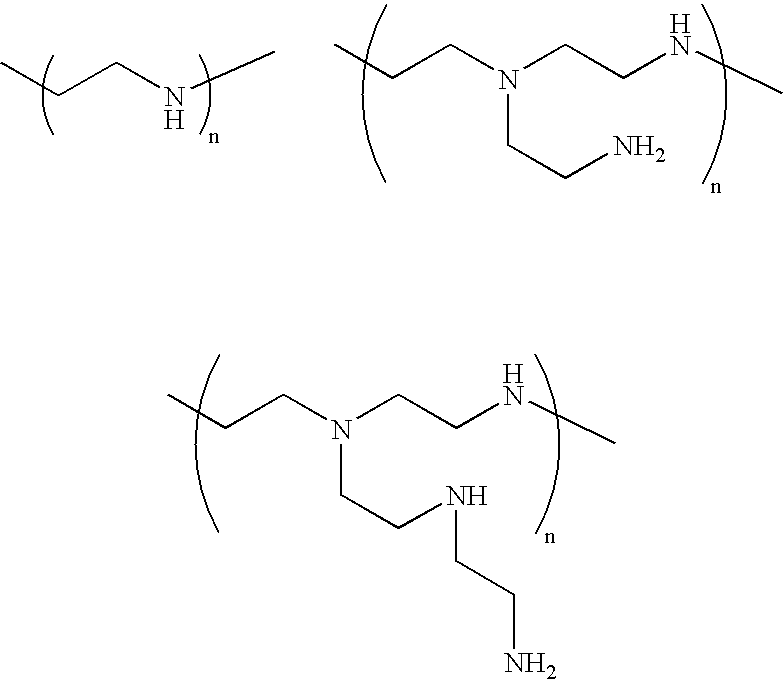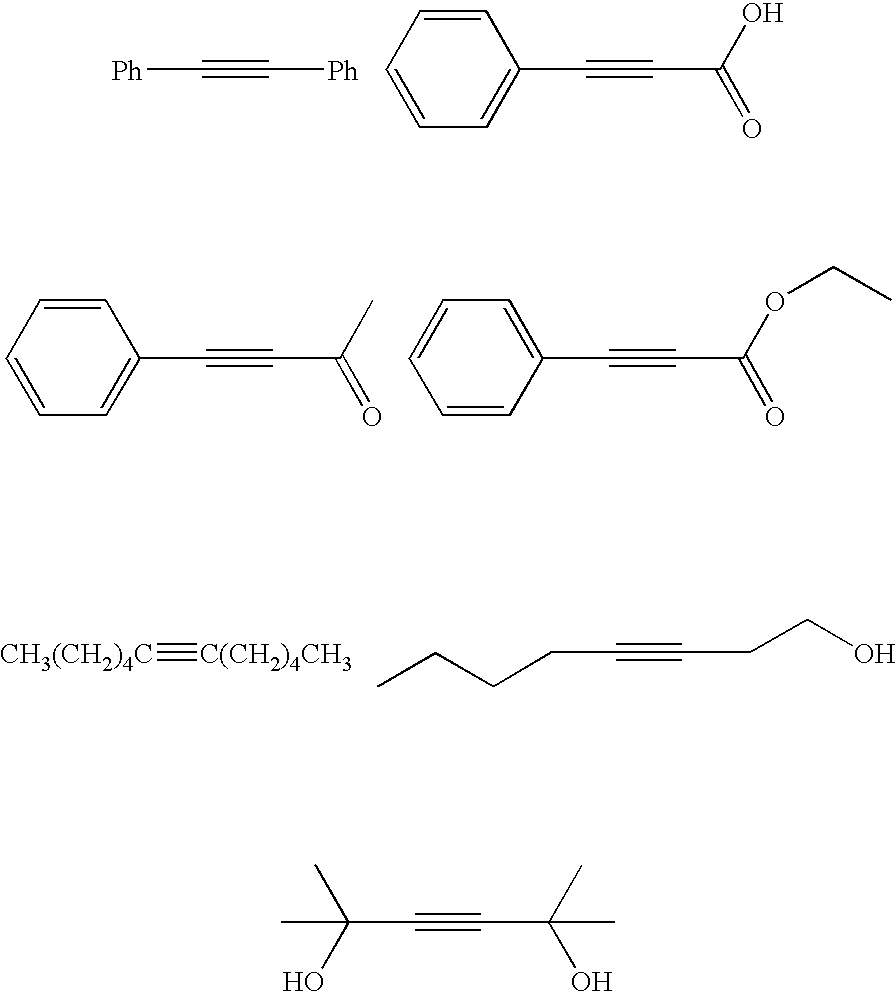Novel Catalyst
a polyethyleneimine and compound technology, applied in the direction of catalytic reactions, hydrocarbon from oxygen organic compounds, chemical/physical processes, etc., can solve the problems of complex post-treatment of catalyst after use, difficult to isolate in a stable state, and inability to synthesize alkene, etc., to achieve easy post-treatment after use
- Summary
- Abstract
- Description
- Claims
- Application Information
AI Technical Summary
Benefits of technology
Problems solved by technology
Method used
Image
Examples
example 2
Reduction of an Alkyne Using the Syrupy Pd-PEI Catalyst
[0031]3-Phenyl-1-butyn-3-ol (146 mg, 1 mmol) as a substrate and the syrupy Pd-PEI catalyst (15 mg) obtained in Example 1 were added to each of various solvents described in Table 1 (an amount described in Table 1), and subjected to a reaction by stirring the mixture at room temperature for 24 hours under hydrogen atmosphere. After completion of the reaction, ethyl acetate (20 mL) and water (20 mL) were added thereto and mixed. After leaving the mixture at rest, the ethyl acetate layer was taken out. After adding and mixing saturated saline (20 mL) to the resultant ethyl acetate layer, and leaving the mixture at rest, the ethyl, acetate layer was taken out. Thereafter, the layer was dried with magnesium sulfate, and the solvent was evaporated off under reduced pressure.
[0032]The resultant substance was analyzed by 1H—NMR spectra to determine residual ratio of the substrate, production rate of corresponding alkene and correspondin...
examples 3 to 9
Reduction of Various Types of Alkynes Using the Syrupy Pd-PEI Catalyst
[0037]The same procedures as in Example 2 were carried out, except that various types of alkynes described in Table 3 as a substrate and solvents (amounts of solvents) described in Table 3 instead of a mixed solvent of ethyl acetate (2 mL) and pyridine (0.5 mL) were used. The resultant substances were analysed by 1H—NMR spectra to determine residual ratios of the substrates, production rate of corresponding cis-type alkenes, trans-type alkenes and corresponding alkanes. The obtained results are shown in Table 3, respectively. In addition, 1:2:3:4 in Table 3 represents a ratio of residual ratio of the substrate: production rate of corresponding cis-type alkene: production rate of corresponding trans-type alkene: production rate of corresponding alkane (ratios by weight).
TABLE 3Kind of SolventExampleSubstrate(Amount of Solvent)1:2:3:43Methanol (1 mL) +1,4-Dioxane (1 mL)3:96:trace:14Methanol (1 mL) +1,4-Dioxane (1 mL...
examples 10 to 15
Reduction of Various Types of Mono-Substituted Alkynes Using the Syrupy Pd-PEI Catalyst
[0039]The same procedures as in Example 2 were carried out except that various types of mono-substituted alkynes described in Table 4 as a substrate and solvents (amounts of solvents) described in Table 4 instead of a mixed solvent of ethyl acetate (2 mL) and pyridine (0.5 mL) were used. The resultant substances were analysed by 1H—NMR spectra to determine residual ratios of the substrates, production rates of corresponding alkenes and corresponding alkanes. The obtained results are shown in Table 4. In addition, 1:2:3 in Table 4 represents a ratio of residual ratio of substrate: production rate of corresponding alkene: production rate of corresponding alkene (ratios by weight).
TABLE 4ExampleSubstrateSolvent1:2:310HC≡C(CH2)9CH31,4-Dioxane (2 mL)0:87:13111,4-Dioxane (2 mL)11:85:412Methanol (2 mL) +1,4-Dioxane (0.5 mL)0:82:1813Methanol (2 mL) +1,4-Dioxane (0.5 mL)0:84:1614Methanol (0.5 mL) +1,4-Diox...
PUM
| Property | Measurement | Unit |
|---|---|---|
| pressure | aaaaa | aaaaa |
| pressure | aaaaa | aaaaa |
| temperature | aaaaa | aaaaa |
Abstract
Description
Claims
Application Information
 Login to View More
Login to View More - R&D
- Intellectual Property
- Life Sciences
- Materials
- Tech Scout
- Unparalleled Data Quality
- Higher Quality Content
- 60% Fewer Hallucinations
Browse by: Latest US Patents, China's latest patents, Technical Efficacy Thesaurus, Application Domain, Technology Topic, Popular Technical Reports.
© 2025 PatSnap. All rights reserved.Legal|Privacy policy|Modern Slavery Act Transparency Statement|Sitemap|About US| Contact US: help@patsnap.com



